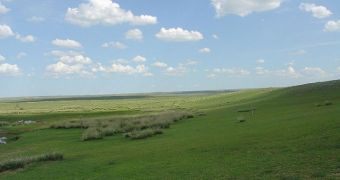In a development that could see farmers making a change for the better in their farming practices, experts at the K. Kellogg Biological Station are currently working on producing a tool that could see workers and small land owners enter the carbon credit market as well. This is the place where greenhouse gases are being traded among polluters and companies that manage to protect the environment. Farmers can access these markets if they install methane capture technologies in animal-based farms, if they employ no-till farming, if they establish grasslands, and or if they plant trees.
The new web-based tool is called the Farming Systems Greenhouse Gas Emissions Calculator, and it represents a simple approach to helping farmers, students, extension educators, and other stakeholders make the best decisions about their lands possible. The development team is spearheaded by experts Claire P. McSwiney, Sven Bohm, Peter R. Grace, and G. Philip Robertson, who are all based at the K. Kellogg Biological Station.
The group also provided a first look of how their system works, by analyzing a three-year rotation of corn, soybean, and wheat. They demonstrated how tillage compares with no-till in this particular culture, and used nothing but the calculators to do that. Details of the work appeared in an article published in a recent issue of the 2010 Journal of Natural Resources and Life Science Education. The work was published by the American Society of Agronomy, in collaboration with the Crop Science Society of America, and the Soil Science Society of America.
In the calculator, future market participants need to introduce their location (any US county), and then select which crops they will grow from a drop-down list. They also need to indicate the yields, tillage practices, and nitrogen fertilizer rates their lands recorded in the past. The tool then determines how much carbon is associated with that particular farm, how much carbon dioxide is emitted by the ground, and by the processes that created the necessary fertilizers, as well as the amounts of nitrogen that the soil emits. This data will allow the farmers access to markets such as the Chicago Climate Exchange, e! Science News reports.

 14 DAY TRIAL //
14 DAY TRIAL //